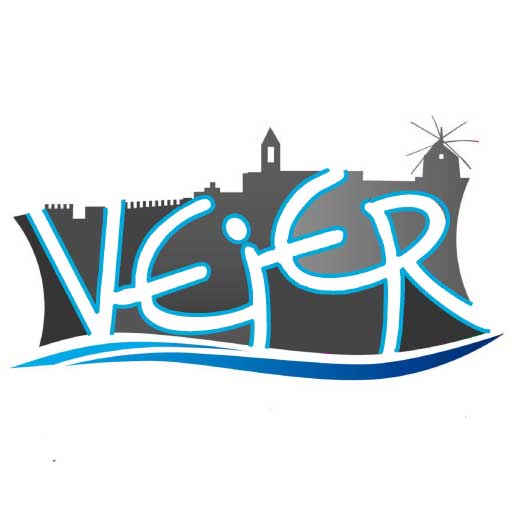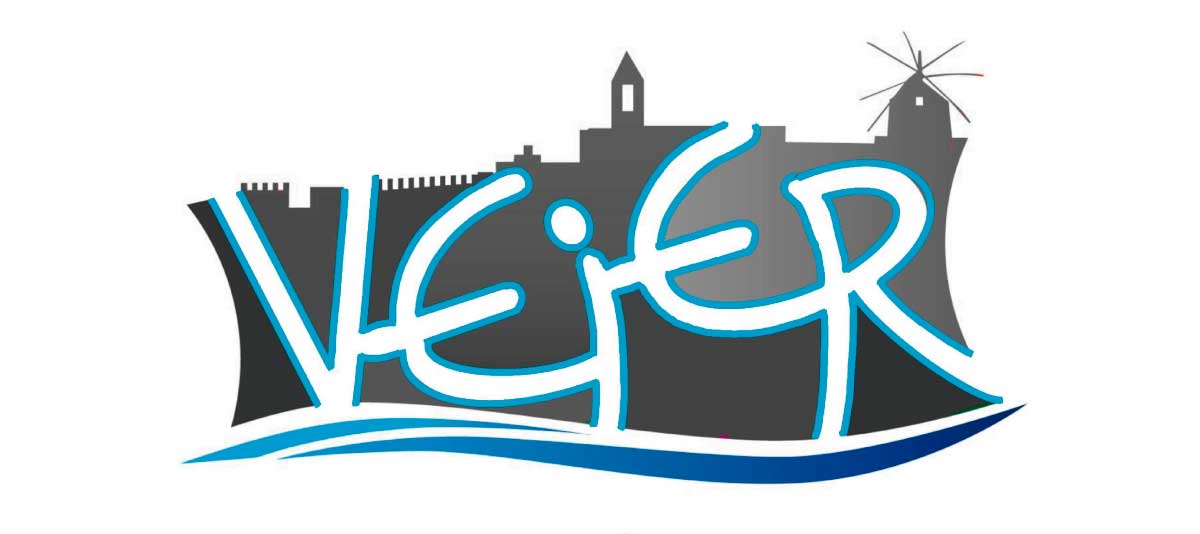
Plan your trip
VEJER IN TWO DAYS
getting to know one of the most beautiful villages in spain
Welcome to Vejer de la Frontera: declared an historical and artistic centre in 1976, the prizewinner of the most attractive village award in 1978 and an official member of “The Association of Exceptionally Beautiful Spanish Villages” since 2014.
Experiencing our village in a single day is a challenge, but we´ll make sure you see the highlights: its ancient walled enclosure, its monuments, its local culture and cuisine…in the hope that by the end of the day you’ll feel that you want to return and continue discovering in more depth all that Vejer has to offer the visitor.
FIRST PART OF THE TOUR
Tourist Information Office
Start your day at the Tourist Information Office, where we’ll welcome you, provide you with a town plan and fill you in on the various activities that are on offer in Vejer.
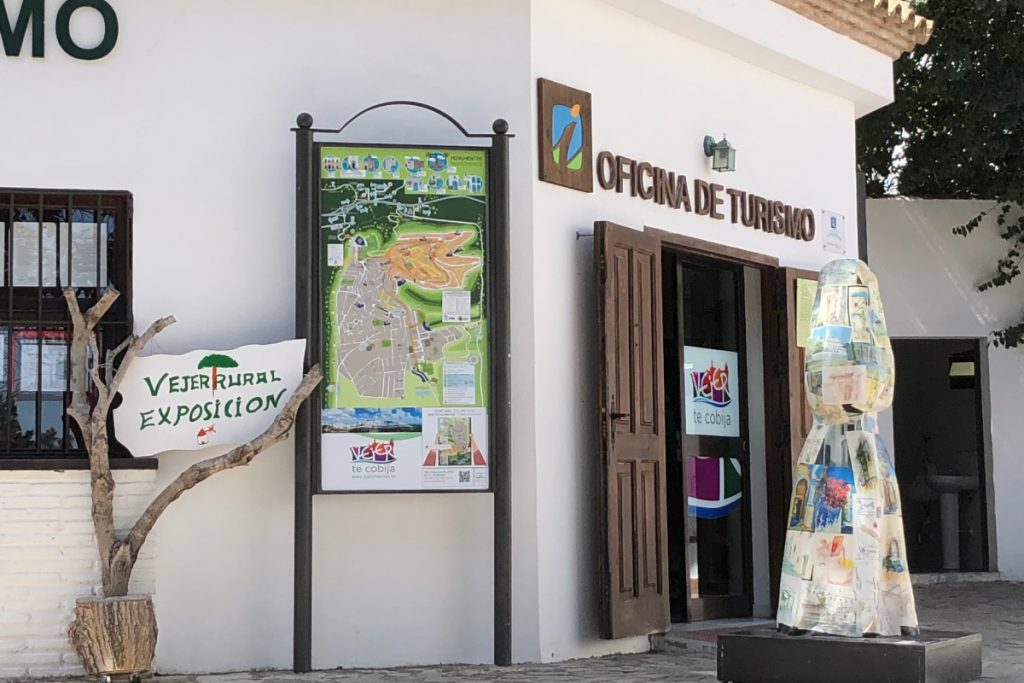
LA PLAZUELA
From there make your way on foot up the Los Remedios Avenue towards the historic centre. Stop for a moment at La Plazuela, which is the small square linking the old town with the new. Here you’ll find Vejer´s first hotel “Convento San Francisco”, situated on the site of the ancient convent of the same name.
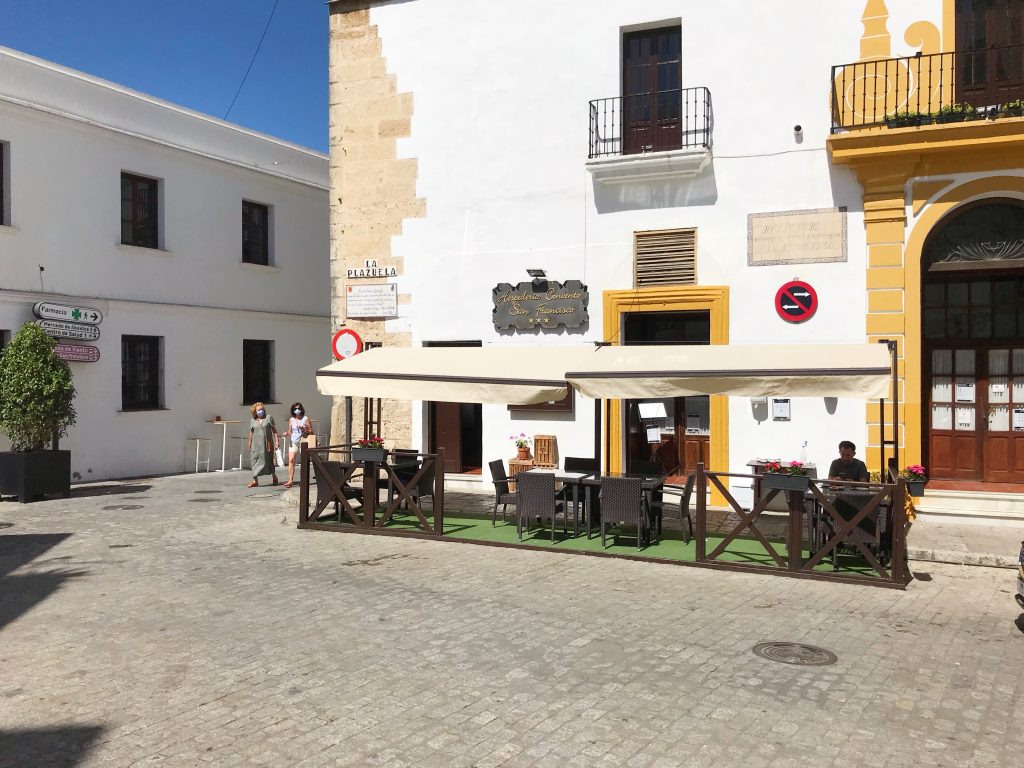
EL MIRADOR DE LA COBIJADA
Continue along the Calle Juan Bueno, pausing again the scenic lookout of the cloaked woman “El Mirador de la Cobijada”.
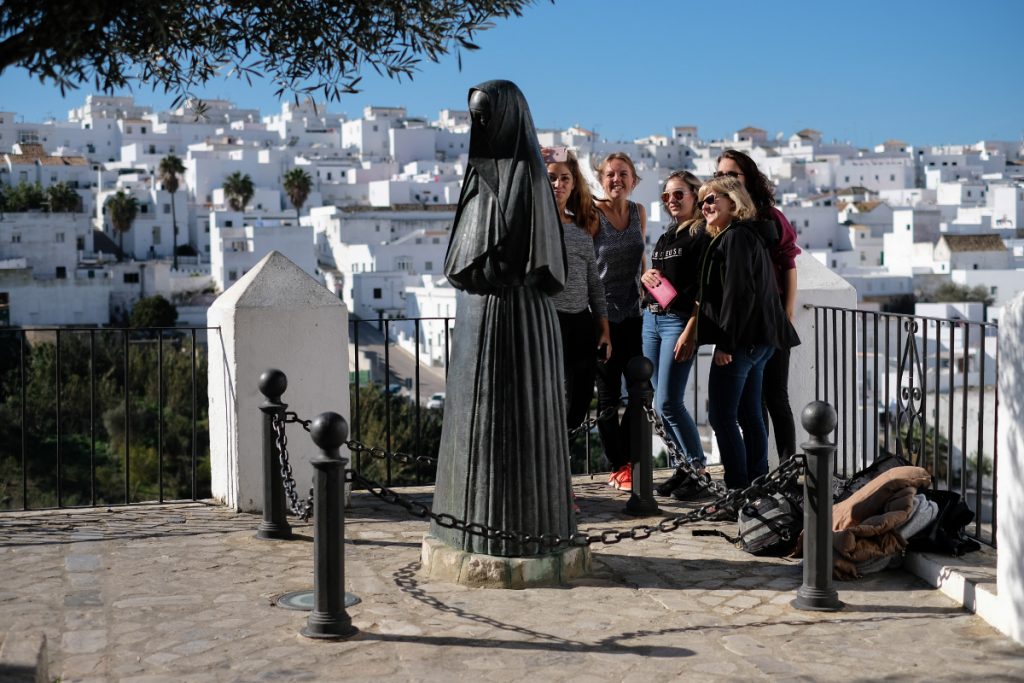
RECINTO AMURALLADO
To your left you’ll see a stretch of the ancient walled enclosure, or RECINTO AMURALLADO,. dating back to the 15th century. Its irregular outline is a consequence of having to adapt to the uneven terrain, encompassing a surface area of just over 4 hectares. The width of the walls varies between 1.5-2 metres, although it is considerably more at the town gateway arches, which have conserved their original dimensions, namely: The Arch of the Roman Axe (ARCO de la SEGUR), the Town Arch (Arco de la VILLA), the Arch of King Sancho IV (Arco de SANCHO IV) and the Arch of the Closed Doorway (Arco de PUERTA CERRADA). Also worth mentioning are the two watchtowers: Corredera Tower (Torre de la Corredera) orientated towards Medina Sidonia and visible from Corredera Street and the Manor Tower (Torre del Mayorazgo) facing towards Barbate coastline.
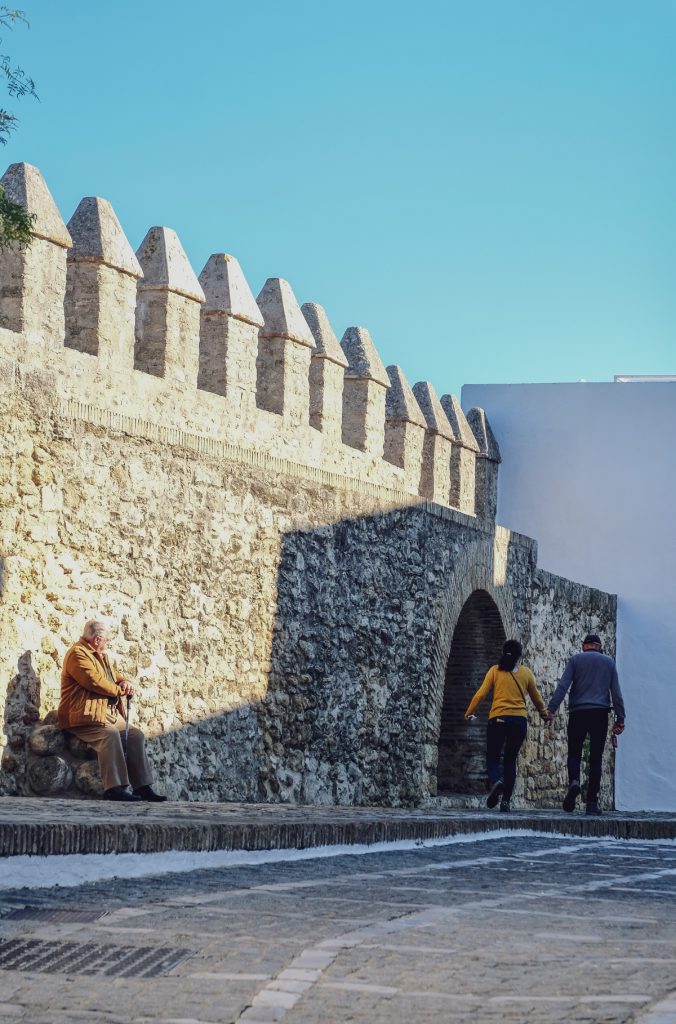
ARCO DE PUERTA CERRADA
From here you can access the old town via Saint Catherine’s Arch (Arco de Santa Catalina), a mock gateway into the walled area, and, as you do so, you’ll be transported back to medieval times as you enter the Jewish Quarter (Barrio de la Judería). A few metres from here on your left you’ll find the ARCH OF THE CLOSED DOORWAY (ARCO DE PUERTA CERRADA) situated at the southern edge of the walled enclosure. As its name suggests, this gateway had to remain closed for centuries due to the grave threat of invasion, as the door led to a road which continued on towards the coast.
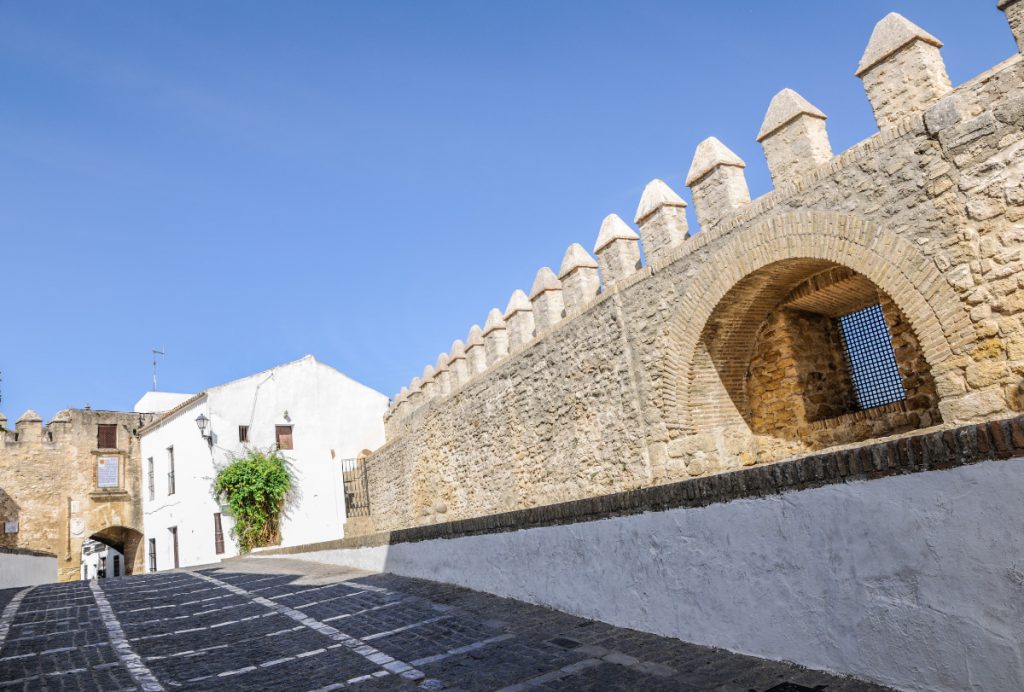
CASTLE
Continue along the Calle Sancho IV which will take you to the CASTLE, dating back to the 10th and 11th centuries, from the time of Abderraman I and his successors. It is located at the highest point, and could well be the oldest inhabited part of the town, being built upon the foundations of an earlier Arabic castle.
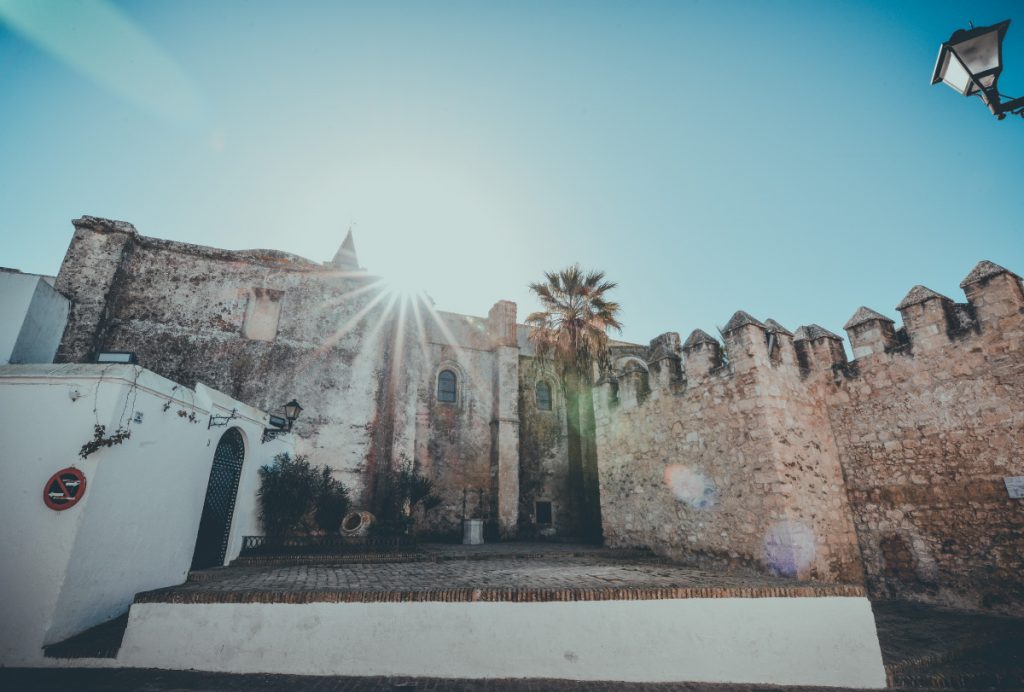
The castle has two patios: the main patio houses the ancient “aljibe” water storage tank, which collected rain water via a traditional guttering system. The cobbled floor of the castle has a herringbone design which prevented the stable animals from slipping.
The arched walkways you see here before you, consisting of columns connected by flattened arches, date back to the 15th century.
Making your way into the second patio, or military courtyard, you’ll see the battlements above you. Access them via the stairway to enjoy spectacular views across the whole town.
In the 14th century the castle was home to the Dukes of Medina Sidonia, the nobility of Vejer. It is classed as a “minor castle” owing to the fact that it only has one point of entry/exit, located in the most accessible position, but also easy to defend. The horseshoe door, framed by Moorish archway surround is the town’s most valued relic of its Arabic past..
Also located in the main Patio is a plaque to commemorate the twinning of Vejer with Chef-Chauen in Morocco. These towns share a strong historical and cultural connection.
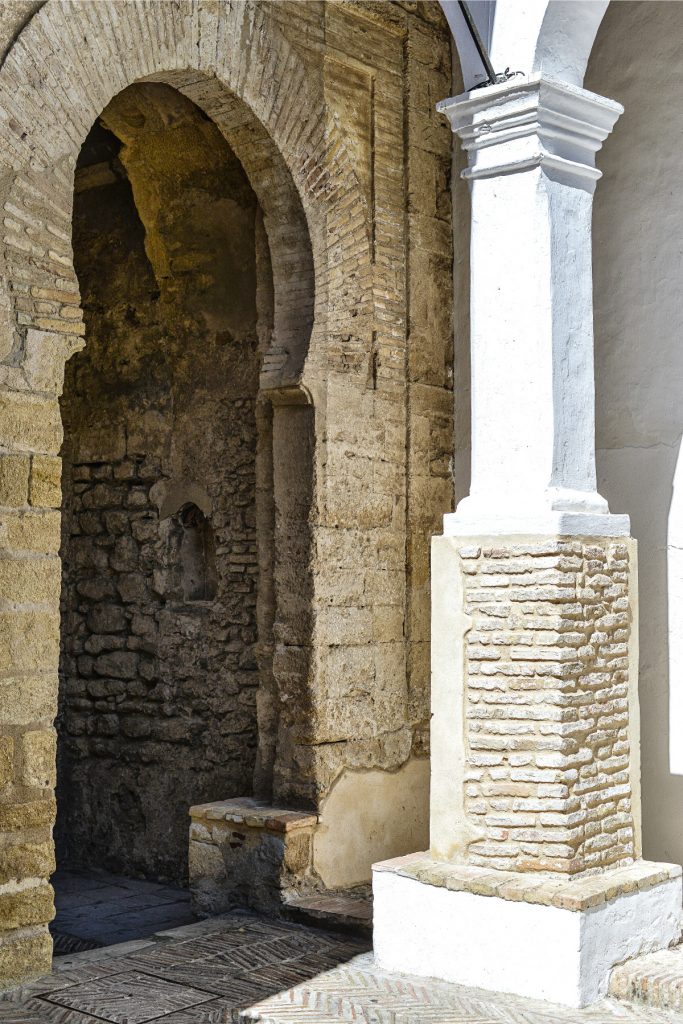
THE ARCHWAY OF THE NUNS
Leave the castle and continue along the Calle Castillo heading towards Calle Ramón y Cajal, and you’ll come across a sight sure to stop you in your tracks. THE ARCHWAY OF THE NUNS (ARCO DE LAS MONJAS) is one of Vejer’s most stunning and iconic streets, consisting of a series of buttresses supporting the lateral wall. These were installed as a result of an earthquake which struck the town in the 18th century.
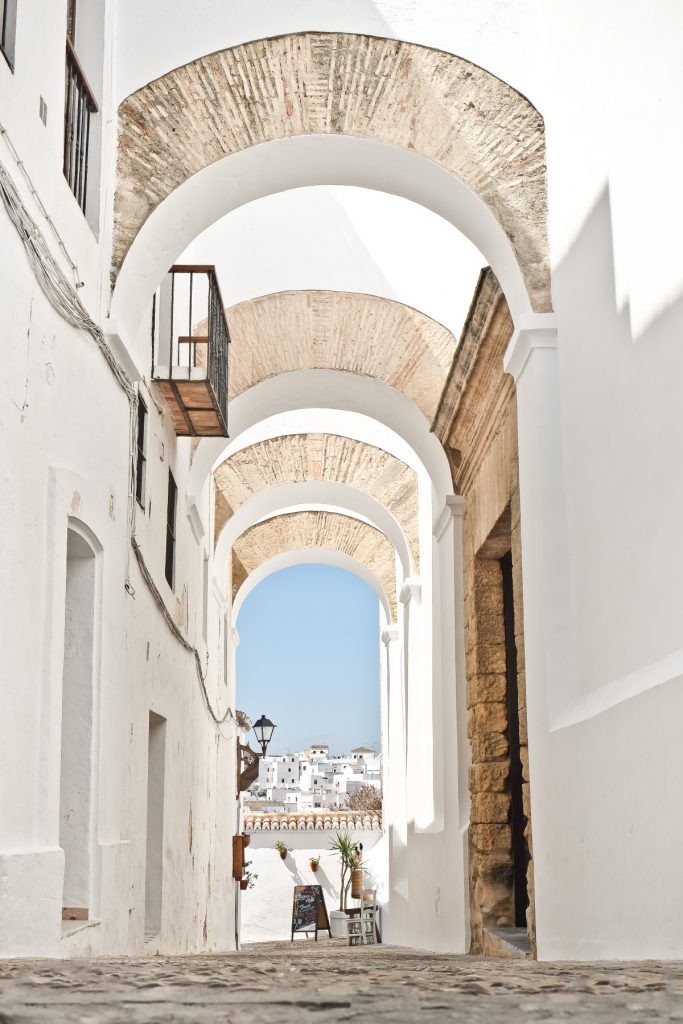
CONVENT OF THE CONCEPTIONIST NUNS
On your right, you have the CONVENT OF THE CONCEPTIONIST NUNS (COVENTO DE LAS MONJAS CONCEPCIONISTAS), constructed around 1552, during the height of the Renaissance. It is all that remains of what was the original Convent of the Conceptionist Nuns founded by D. Juan de Amaya in 1552 as a mausoleum for himself and his wife. It is a single nave church, with a noteworthy Renaissance-style main entrance, a spherical dome erected upon the main chapel and the vaulted crypts of its founders.
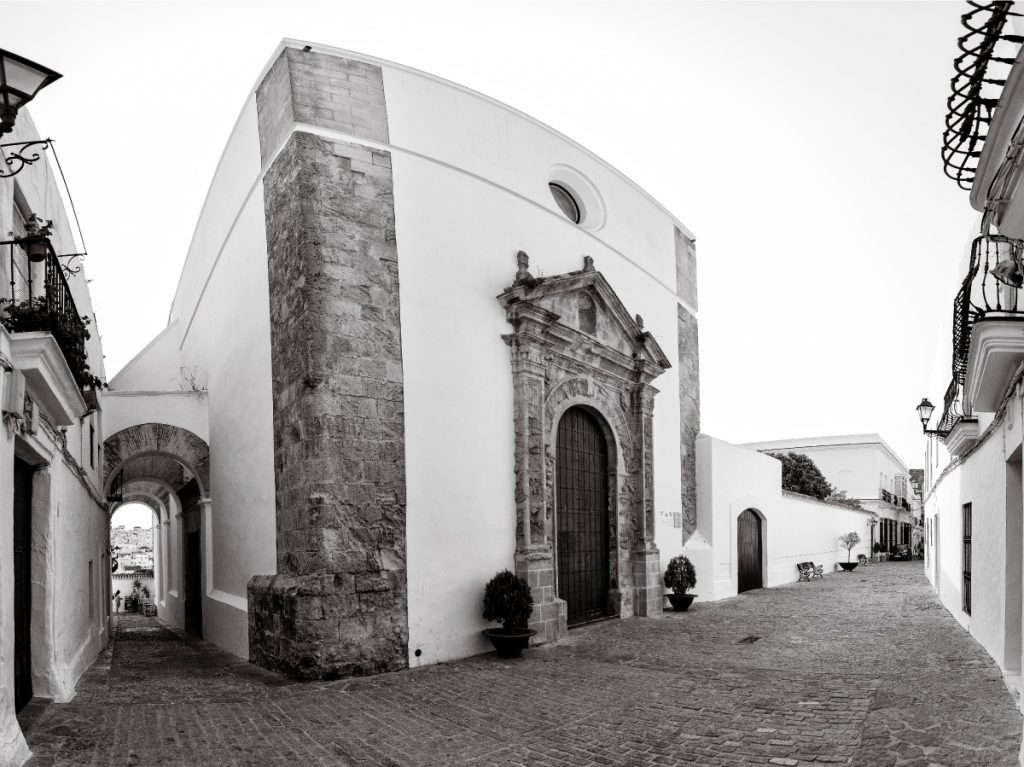
Currently this building houses the MUNICIPAL MUSEUM OF THE CUSTOMS AND TRADITIONS OF VEJER (MUSEO MUNICIPAL DE COSTUMBRES Y TRADICIONES DE VEJER). Here you can see a display of articles from Vejer´s recent past. Visitors gain a sense of the ways of life of the local people of Vejer in the last century via the collection of tools and artifacts corresponding to farm work and other traditional occupations.
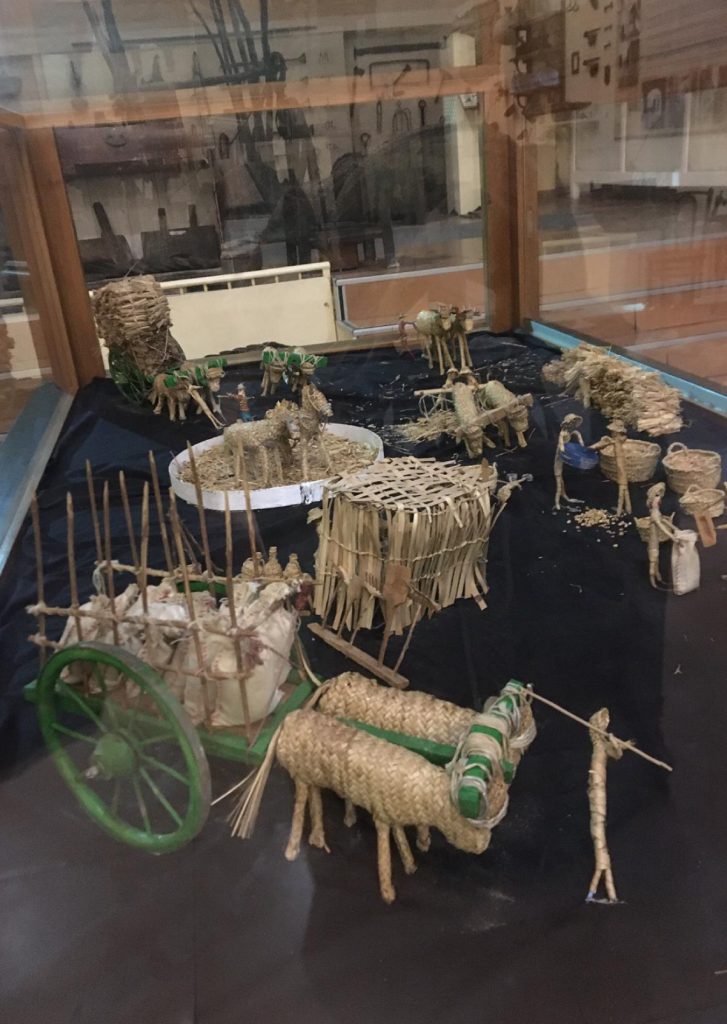
CHURCH
On leaving the Museum you can see one of the walls and bell tower of the DIVINE SAVIOUR PARISH CHURCH (IGLESIA PARROQUIAL DEL DIVINO SALVADOR). It is the main parish church, and, like the castle, it is situated at the highest point of the town. The privileged position within the walled enclosure of these buildings is a testament to the importance of both religious power and civil military power in Vejer’s past.
The origins of the church go back to the time of the expulsion of the Muslims. The Christian monarchy were conquering territory under Muslim rule and the mosques were then converted into Christian churches. Vejer was conquered by Fernando III “The Saint” (“El Santo”) in the 13th century, on the 6th August to be precise, which is the day of St. Salvador.
Built upon the site of an ancient mosque, the church has a basilica ground plan with a rectangular apse and consists of three naves, the central nave being higher than the lateral ones.
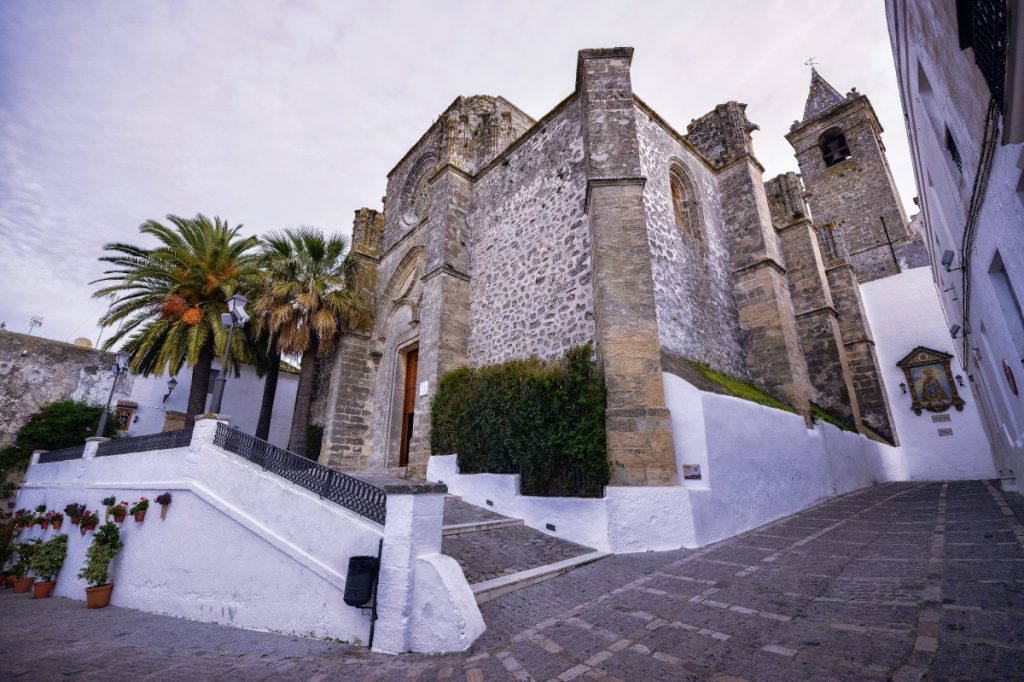
Architecturally it is composed of two perfectly discernible parts, which correspond to two stages of its construction; the Gothic Mudejar sanctuary from the 14th century and a Late Gothic extension dating from the end of the 15th century to the beginning of the 16th.
The lateral naves lead on to three chapels. The high altarpiece is worth mentioning, being carved out of cedar and laburnum wood by the master craftsman Francisco de Villegas in the 17th century,
The church has two entrances, both modest in design. From one of these emerges the slender bell tower, built upon the old minaret of the mosque, and which suffered, as did the rest of this building, the impact of two significant earthquakes: one that struck the region in 1773, followed by the Lisbon earthquake of 1775.
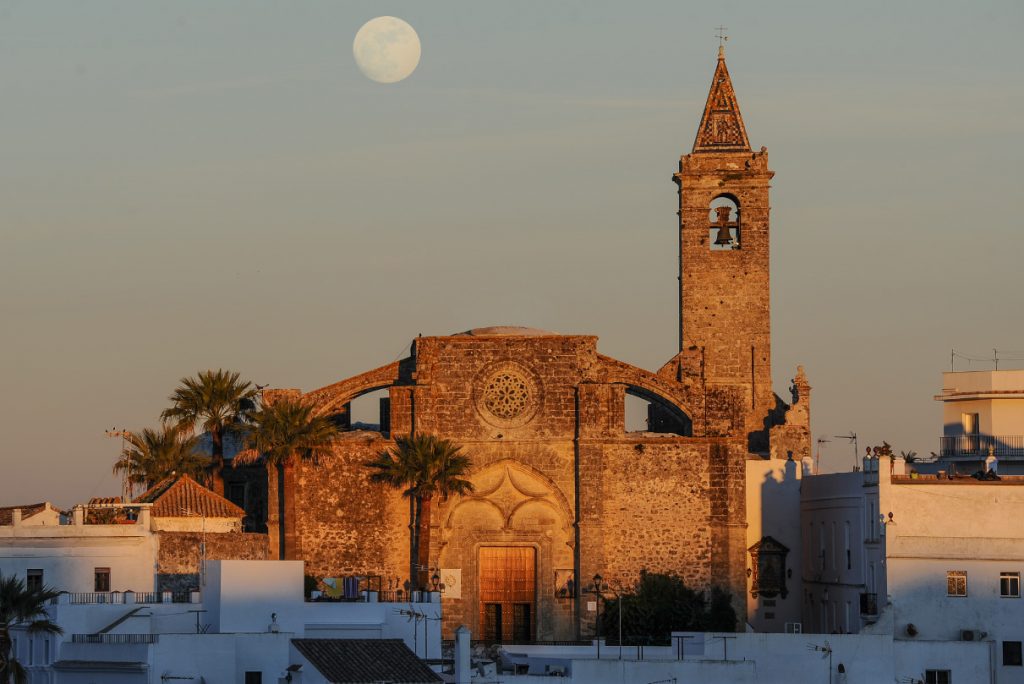
ARCO DE LA SEGUR
As you leave the church, walk around the back of the building and you’ll come the second gateway arch of the walled enclosure, The ARCH OF THE AXE (ARCO de la SEGUR) located on the west side of the town. It was built at the end of the 14th century, during the epoch of the Catholic Kings. It consists of a rounded archway framed by a surround, of which only a part remains. Its name is attributed to the marble relief which can be seen on the inner part resembling an axe or a “segur”, which represents the judicial power of Rome. Below this axe is a crest belonging to local nobility: the Mendoza family. In the upper part of the archway is a plaque dedicated to the local hero Juan Relinque, who will be mentioned in more detail later.
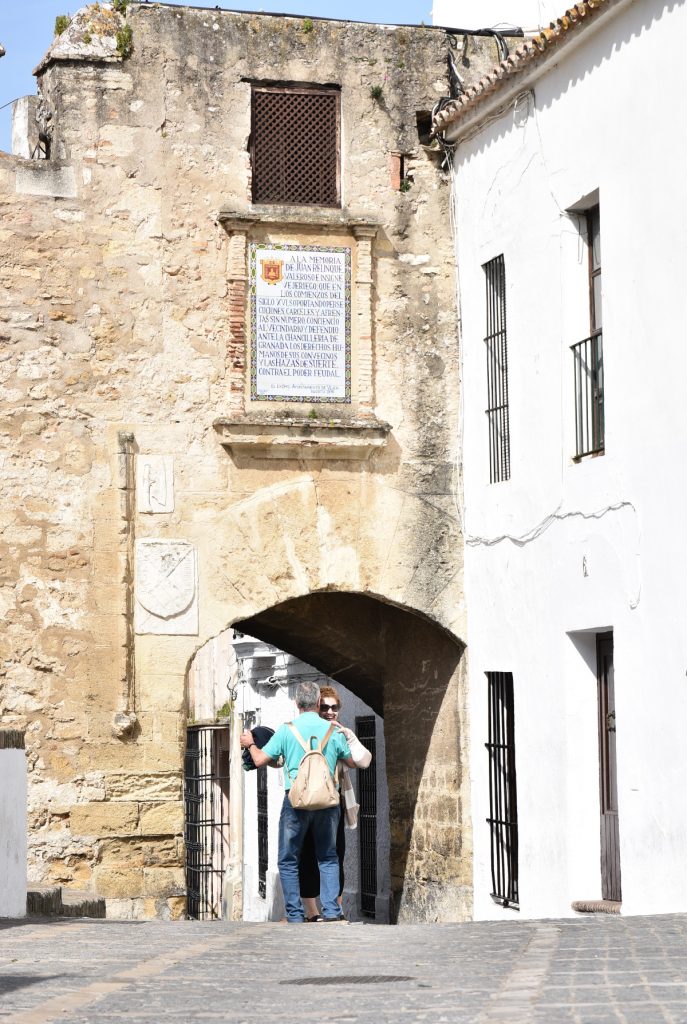
From here you can see another stretch of wall, known as las “Murallas de la Segur”, which stages important events such as the Evening of Dance, the musical theatre Zarzuela event,concerts, the Vejer Moving Dance Party and Flamenco Night. In fact, this “Noche Flamenca” on the third Saturday in August has gained recognition for its touristic appeal from the National Tourist Board as a noteworthy Andalusian event.
The cultural appeal of Vejer is one of its prime assets as far as tourism is concerned. Numerous events, each with a successful turnout, are organized throughout the year: traditional local fiestas, the Night of Candles, dance, theatre, the annual Jazz Festival, cinema …
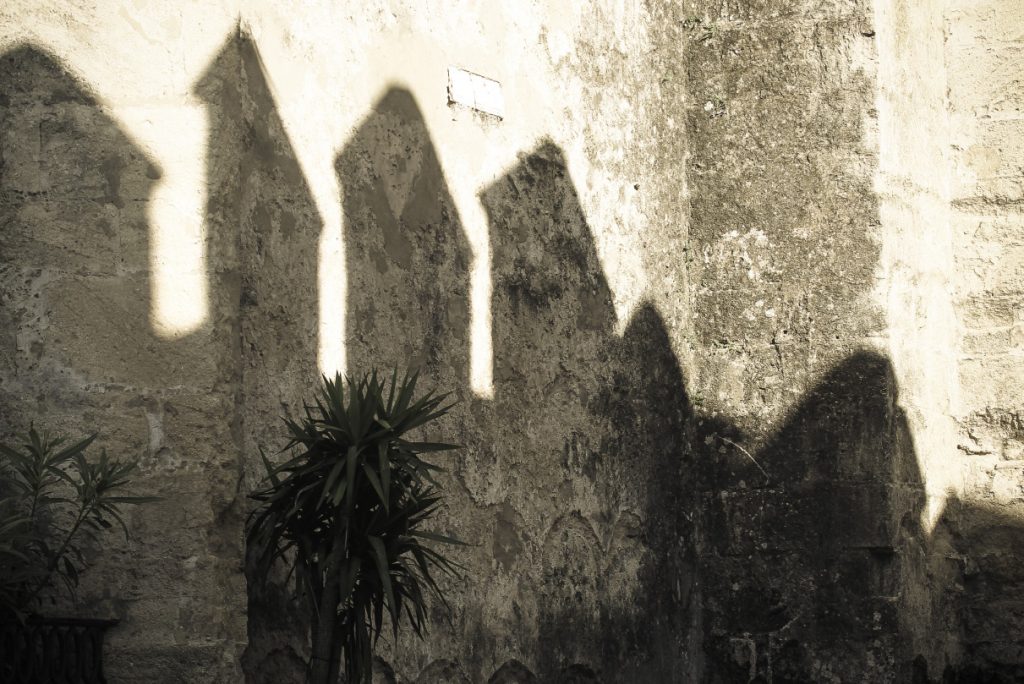
PALACIO DEL MARQUÉS DE TAMARÓN, MUSEO DE HISTORIA Y ARQUEOLOGÍA DE VEJER
Passing through the Arch of the Axe (Arco de la Segur) 20 metres to your right you have the PALACE OF THE MARQIS OF TAMARON (PALACIO DEL MARQUÉS DE TAMARÓN), site of the Vejer Museum of History and Archaelogy (Museo de Historia y Arqueología de Vejer) which, via a series of explanatory plaques, guides you through the history of the town. This museum space has been recently created and consists of 13 rooms, housing an archaeological collection covering the historical evolution of the locality from Paleolithic times to the present day. There are also rooms for the exhibition of Fine Arts, where you can find the outstanding work of the painter Julia Relinque.
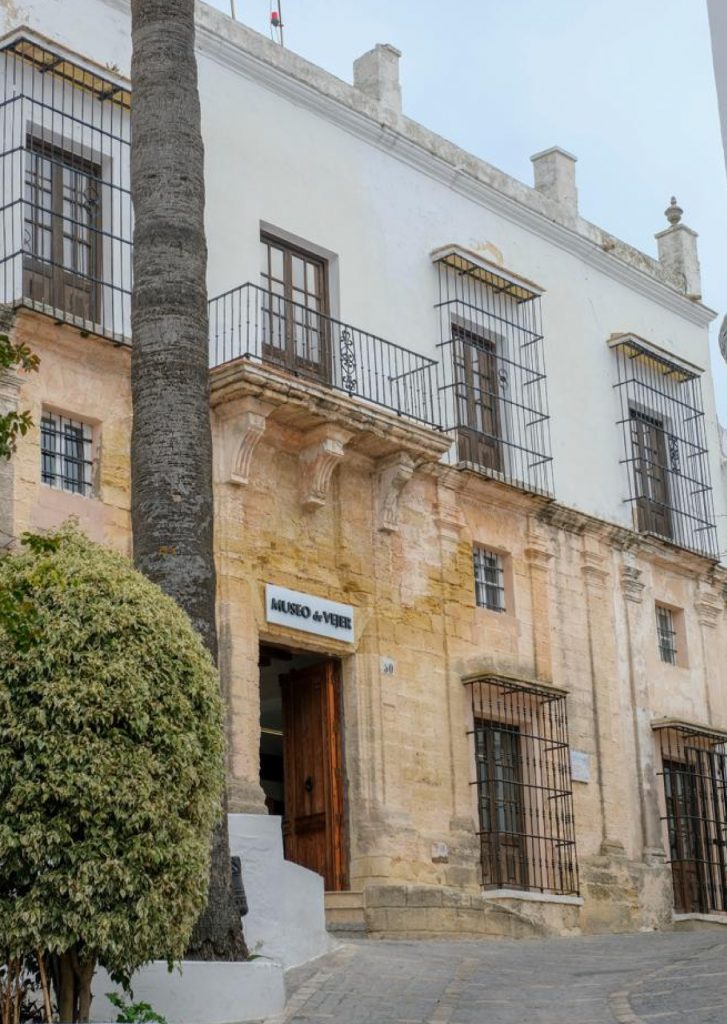
The building itself, renovated some years ago, is worth visiting. Its trapezoidal shaped floor, contrasts with its harmonious Neoclassical-style façade, reaching slightly above the ground floor level, is made up of a series of adjoining bolstered pilasters which frame the porticos of the doorway and windows. The upper floor is separated by a cornice surround, jutting out into a central balcony. The door and window railings complement the building’s façade.
You enter via a hallway which leads to an interior patio made up of four rounded arches resting on four columns. The 100 year old central Kentia palm tree reaches higher than the building itself. On the upper floor the rooms branch out from the interior space created by the patio below.

On leaving the museum, you pass through the ARCH OF THE AXE (ARCO de la SEGUR) again and return once more to the enclosure of the ancient town.
To truly discover Vejer´s Moorish past, we suggest that you put away your street guide and let yourself wander the cobbled streets and alleys of the old town. Give yourself the opportunity to take in and enjoy every detail: the whitewashed walls, the typical patios and the winding cobbled streets. You are certain to see so many beautiful sights that you’ll want to capture, iconic streets such as: Calle Badillo, Callejones Oscuros, Calle Costanilla, Capitán Quintalla and Cajellones de la Villa.
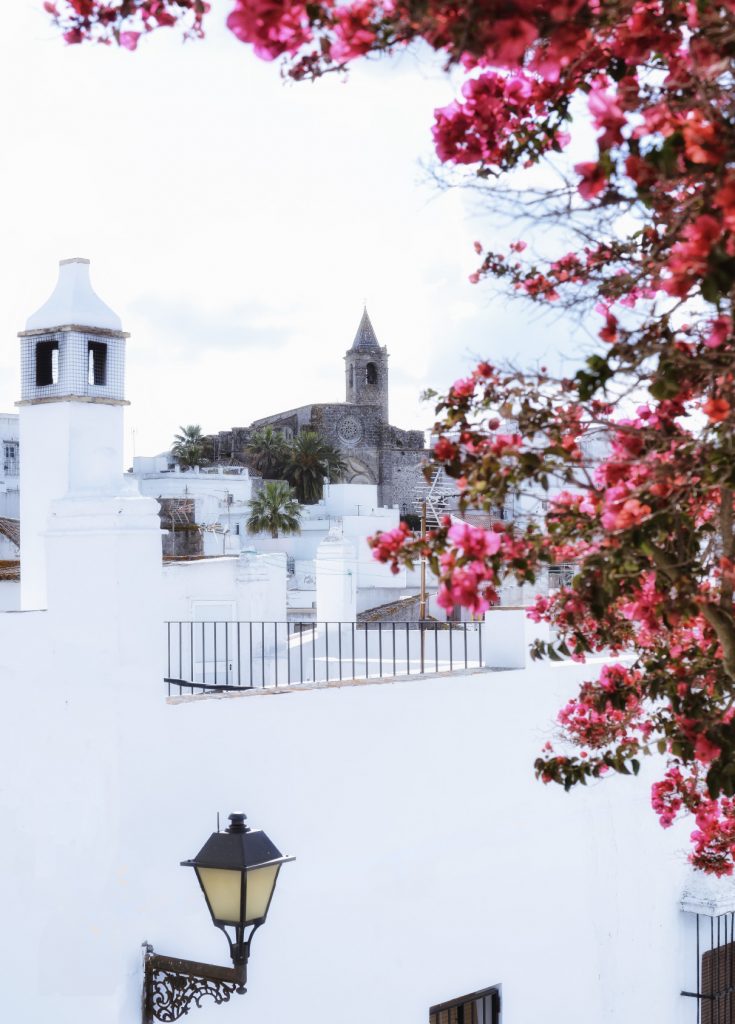
ARCO DE LA VILLA Y PLAZA DE ESPAÑA
Your steps will eventually take you down to the TOWN ARCH (ARCO DE LA VILLA). This east-facing entrance was the most important point of access as it led to the Town Council as well as the Barca (riverside trading post), in spite of this, it is the only gateway which did not survive in its original state. From here you can make your descent to the PLAZA OF SPAIN (PLAZA DE ESPAÑA), locally known as “The Plaza of the Little Fish”. It is here that the most important proceedings of the Velada cultural event take place (from the 10th to the 24th August), in honour of the town´s Patron Saint, the Virgin of the Olive Grove (Virgen de la Oliva). The Plaza dates back to the 16th century when the town began to extend beyond its walled enclosure.

In the 16th and 17th centuries it was used as a bullring for the benefit of the Vejer nobility and Knights of Rank. In 1957 a fountain was built in its centre, made with tiles from Seville. The Town Hall was also built on the Plaza.

ARCO DE SANCHO IV
Next, follow the old wall along Manor Street (Calle Mayorazgo) where you can see the Tower which goes by the same name. At the end of the street you’ll find a monument representing the local hero Juan Relinque, who fought to preserve “Las Hazas de Suerte” or “The Lucky Lottery Land” which enabled local people to benefit from public farmland via a lottery procedure (press the link for further details).
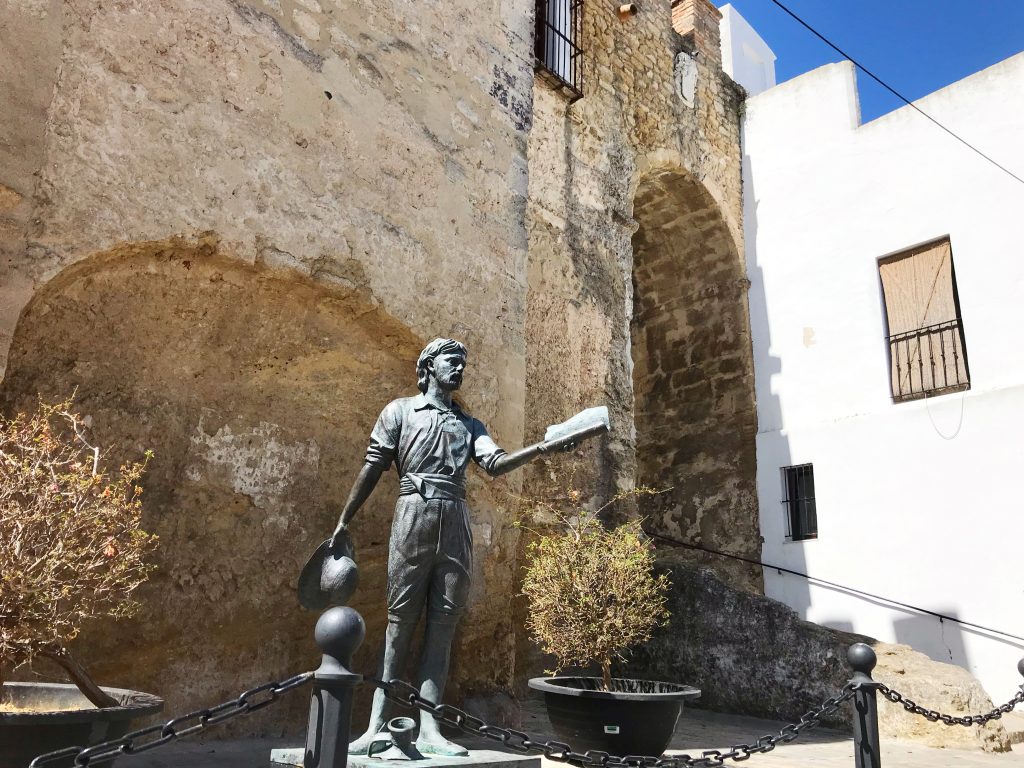
From here you can also see the ARCH of KING SANCHO IV (ARCO DE SANCHO IV), located on the north side of the walled town, facing Medina Sidonia. It is a rounded archway with an interior ledge, emphasizing the width of the wall. Above the arch is a baroque-style family crest belonging to the nobility. At this gate the street level has dropped by 2 metres, exposing its foundations and requiring a flagstone ramp to compensate for this drop and connect it to the Corredera street below.
CORREDERA
Continue to walk along the Corredera which will take you to the impressive panoramic viewing point across the countryside of Vejer.
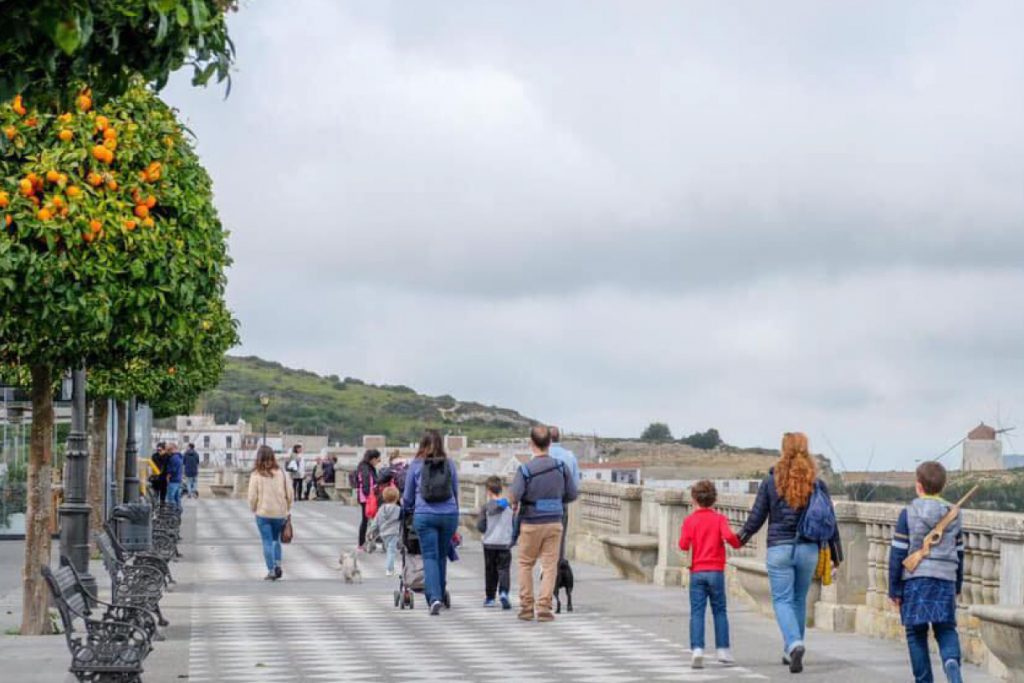
WE TAKE A BREAK
During your visit you will have seen the variety of restaurants and bars the town has to offer. Our gastronomy is one of the key attractions for tourists visiting Vejer and yet another reason to return here (see the links on this website for more information). Now is the moment to take a seat on one of the benches along the Corredera to decide where you’d like to eat.
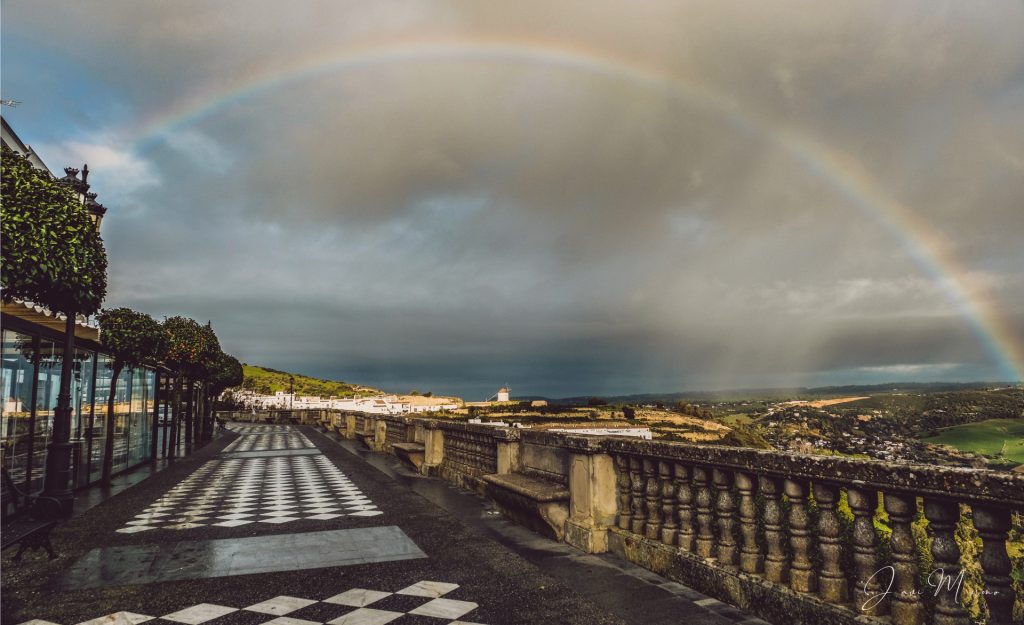
A WALKING AFTERNOON in the new area
Visit the rural village of SANTA LUCÍA, located just 4 km from Vejer. Drive down the road and take the first exit at the roundabout with the “VEJER” sign in big white letters and then, a few metres ahead you will come to another roundabout with a decorative windmill. Take the first exit towards Algeciras-Málaga. Although Santa Lucia is on your left, it is not possible to make a left turn on from the main road. Instead you should continue for a couple of kms along the road A-48?.(N-340) until you get to the Medina Sidonia junction. Take this left, but then do a U-turn as soon as you can, so that you can return to the same road you came from ( N-340) but this time on the right-hand side. Caution! Drive slowly on your drive back in the direction of Vejer, because the “Santa Lucía” sign is just 200m from the junction, but also small and easy to miss.
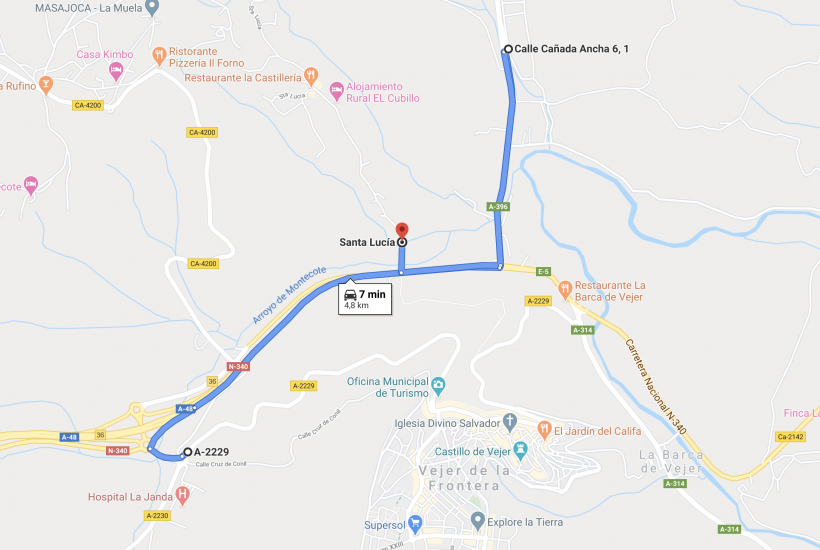

In 1931 Santa Lucía was declared a Natural Monument due to the rich exceptional beauty of its landscape. Currently this rural district has about 151 inhabitants who make their living from the land. You will find an abundance of vegetable gardens and fruit trees. Santa Lucía is blessed with an exuberant vegetation due to its fertile soil and the quantity of water which flows down from the natural slope of its plateau, known as the Meseta de la Muela.
Cuenta con una exuberante vegetación, debido a la riqueza del suelo y a la gran cantidad de agua existente, ya que está ubicada en la ladera de la Meseta de la Muela.
SAN FRANCISCO SQUARE AND KISSING CORNER
The afternoon can be spent visiting the new town. From the Plazuela you’ll take a new route, along the street named after Juan Relinque, turning into Plaza San Francisco which is home to the Gastronomic Market Place and the San Francisco Municipal Theatre.
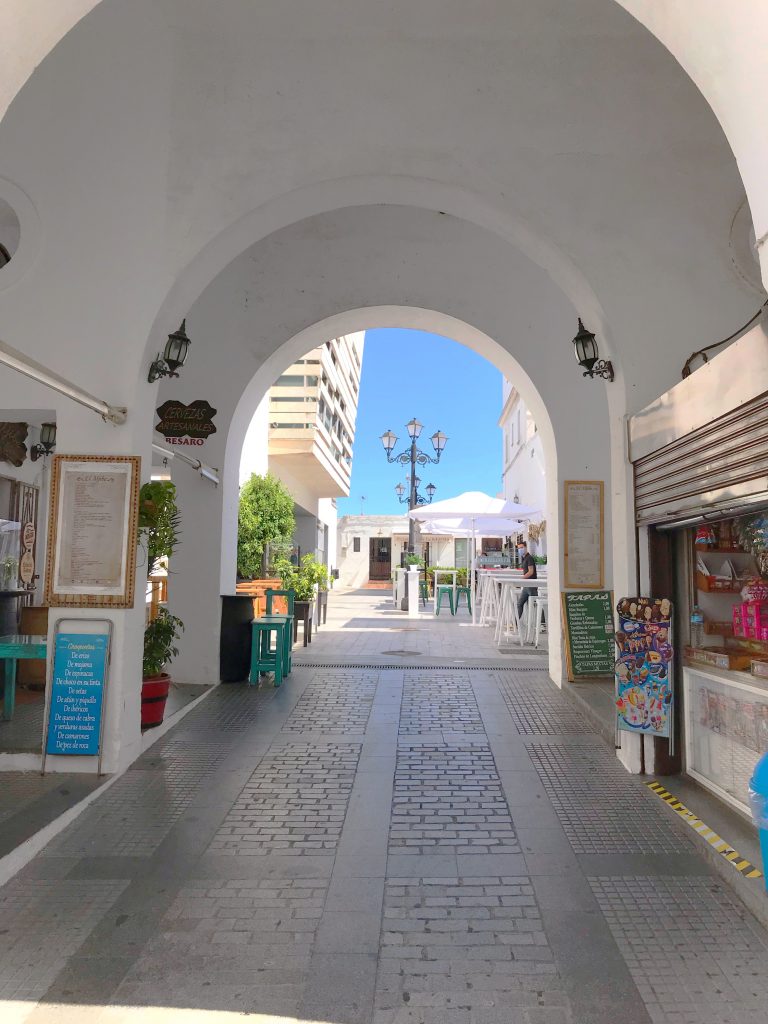
Then continue long Calle San Filmo until you get to Calle Viña, where you can stop for a moment at The Corner of the Kiss (el Rincón del Beso) and admire the impressive views across to the monuments of the old town.
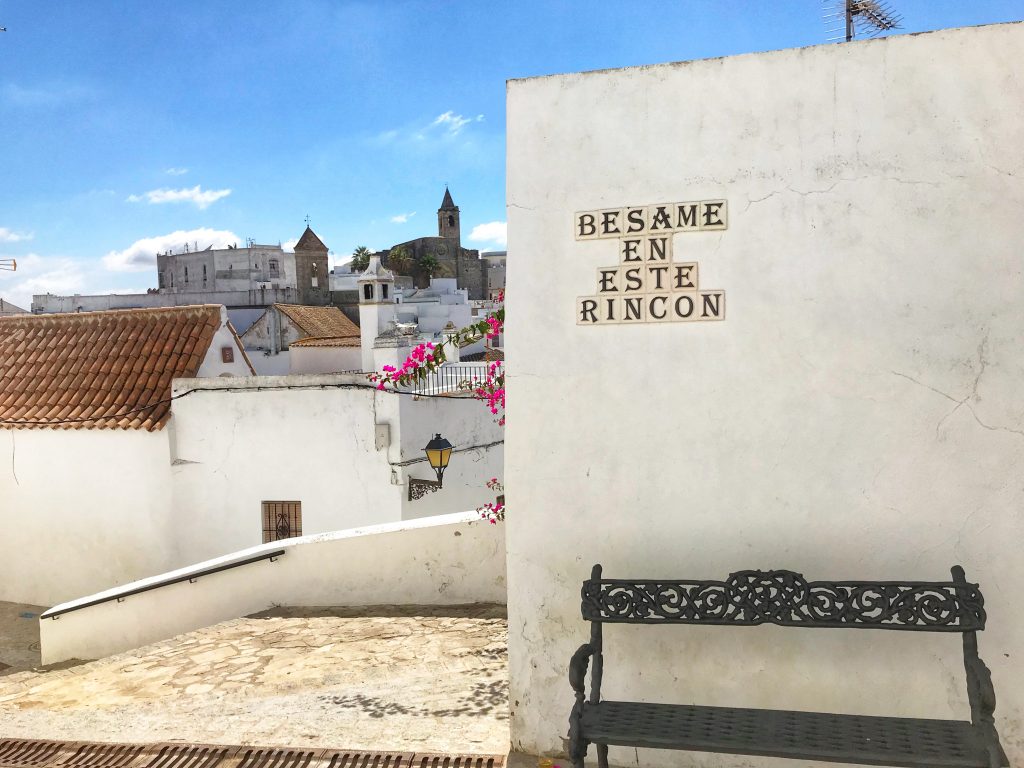
THE NEIGHBOURHOOD OF LA HOYA
Next, head downhill to return to Calle Juan Relinque via the stairway in Calle Leonor Sánchez, continuing on in the direction of San Miguel Avenue, all the while letting yourself explore and discover the charming little streets along the way: La Hoya neighbourhood, the Plaza of Peace (Plaza de la Paz), brightly decorated with colourful flowerpots. la Calle Sagasta, as well as the intricate winding alleys that branch out to your right.
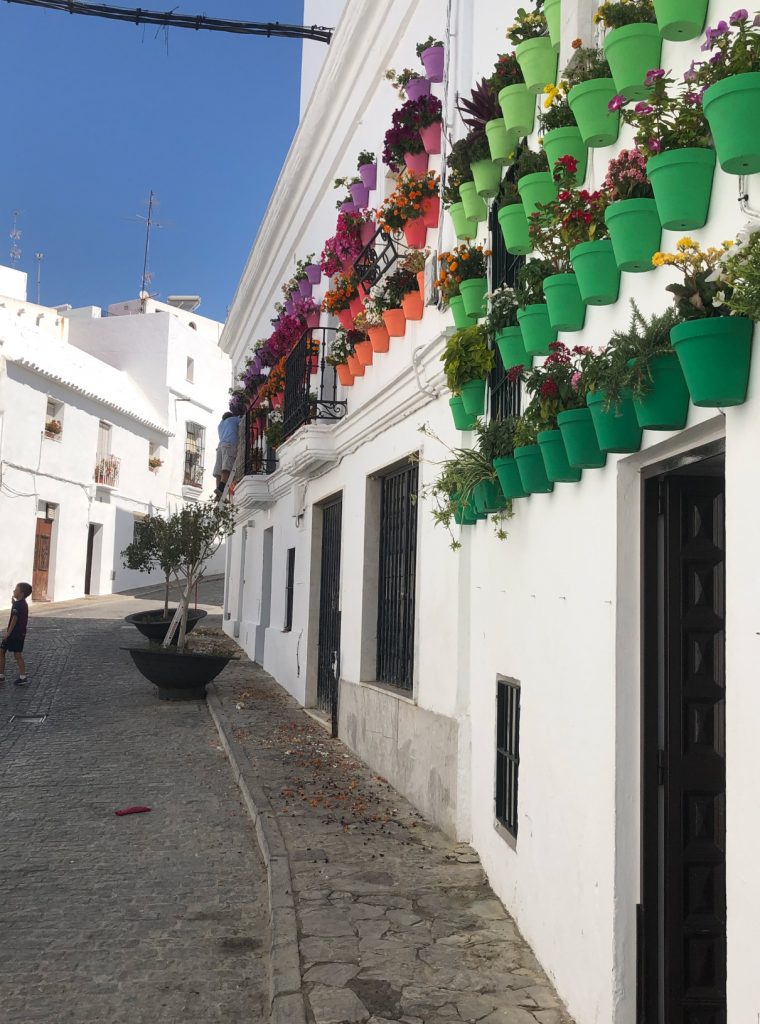
the neighbourhood of san miguel and nelson mandela park
Once you arrive in the San Miguel neighbourhood, make your way to the Plaza Nelson Mandela. From here you can enjoy one of the town´s best views: the skyline of the old town.
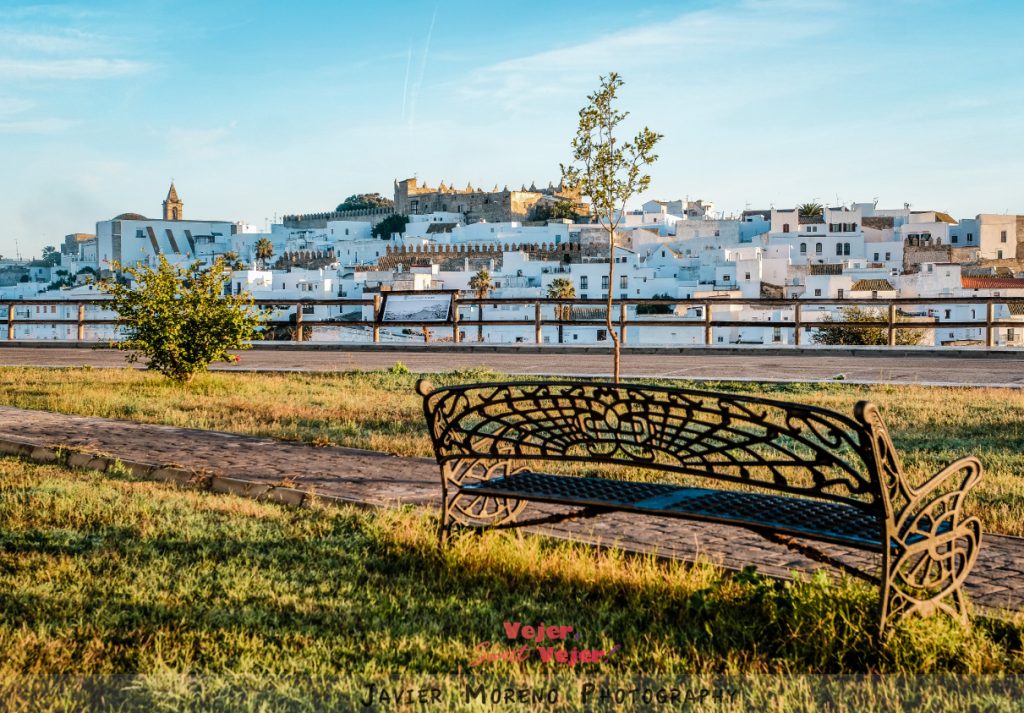
hazas de suerte park and windmills
Continue on towards the Hazas de Suerte Park where there are three WINDMILLS (MOLINOS DE VIENTO). They are Carthaginian-style in their design, with their bases more robust than their Manchegan equivalents, therefore enabling them to better resist strong gusts of wind as well as offering a more powerful alternative to the water mills. The four windmills of San Miguel were built in the 1960s and their presence on the hilltops certainly enhances the town.
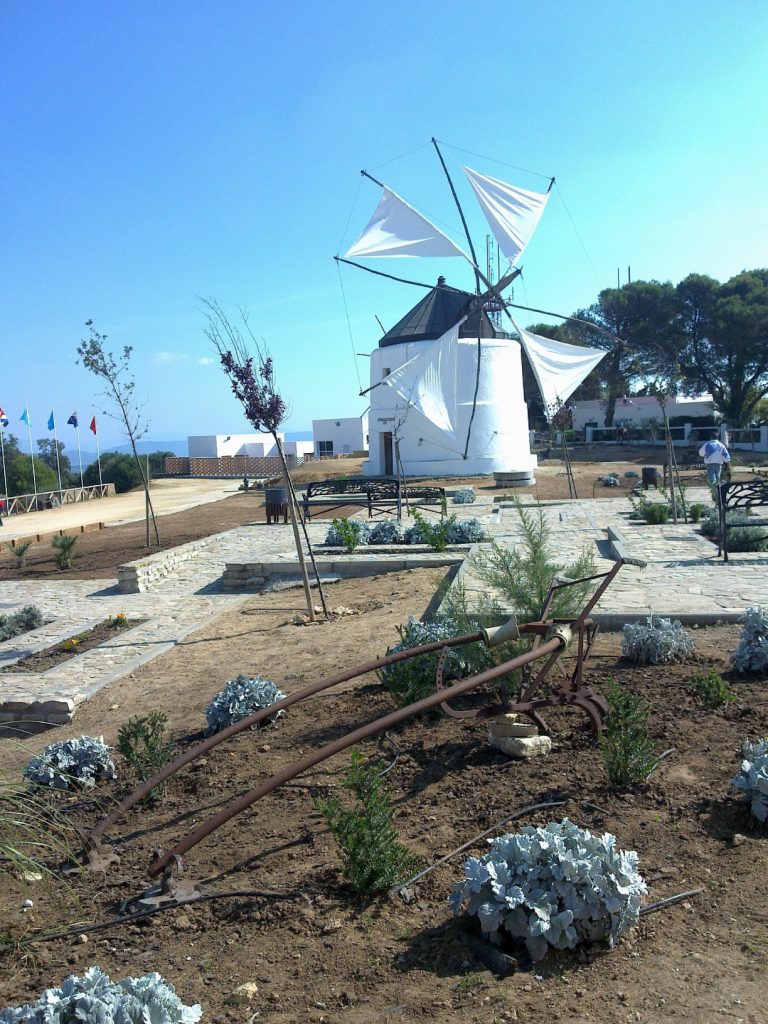
avenida buenavista, carretera de los militares
To finish your visit to Vejer, walk up the Buenavista Avenue towards the Military Road (Carretera de los Militares). This area is very popular with walkers. You can also see a paragliding take-off and landing point, where enthusiasts flock to when the “poniente” west wind blows.
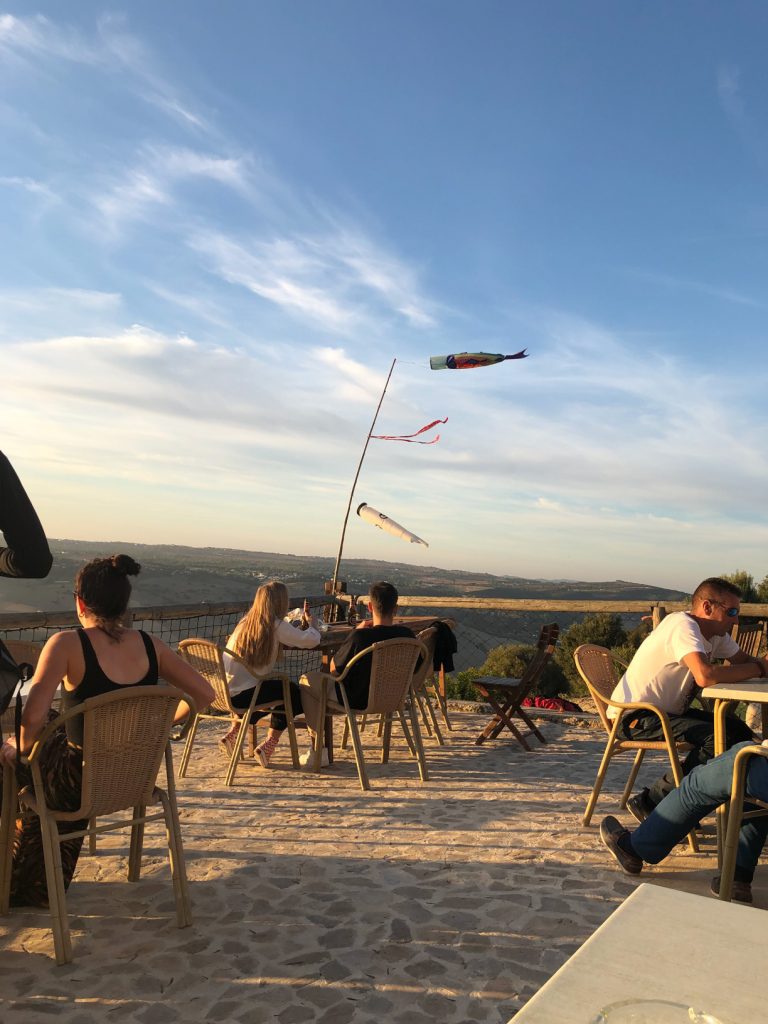
This is an ideal spot to enjoy a magical sunset, being able to see as far as El Palmar beach, Conil and the small rural settlements of La Muela and Patria.
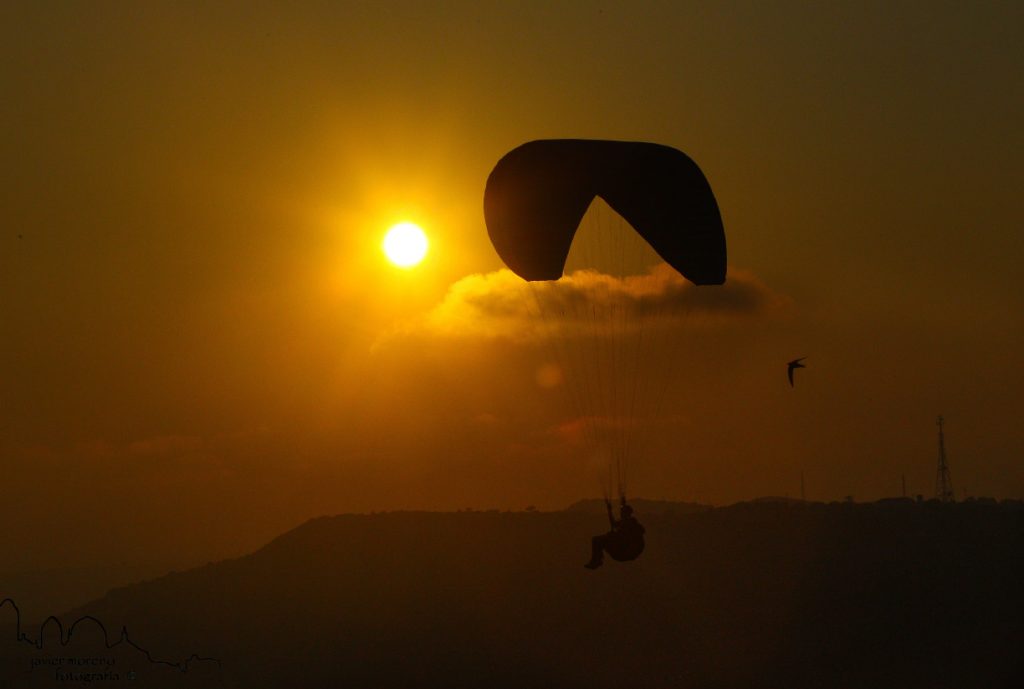
For this reason, in the 15th century, it was decided that seven water mills should be built here to grind wheat into flour. Parts of blocks and several millstones remain from five of these mills named Santa Lucía, Hoyo, Batán, Garrobo and Miraflores. Their construction was in response to the successful cereal production found in the lowlands of Andalusia. Today the mills are no longer operative, however they were at the heart of Santa Lucía’s economy, and enabled the creation of the first flour production plant in the region. These mills were owned by the Duke of Medina Sidonia who charged a rent for their use.
Thanks to the spring of La Muela and the potential provided by the natural incline of the land, an aqueduct was built in Santa Lucía to supply water to the town of Vejer as well as irrigate its surrounding orchards and vegetable gardens. Although the aqueduct was assumed to be Roman and to have been reinforced later in the Islamic period, recent archaeological studies show that, in fact, its construction coincides within the same period that the watermill complex was built.(15th century).
The aqueduct consists of a series of pillars and arches made from limestone and sandstone ashlars. Have a look the “atarjea”, or the drainage system, which is part of the aqueduct: a construction that was used to transport water. This could be either: towards the aqueduct, from one mill to another or, to the irrigation areas. It is a narrow stone channel, either at ground level or elevated on arches, designed to divert the water from one place to another.
At the beginning of the 20th century, the Count of Villariezo inherited Santa Lucía from the Ducal House of Medina Sidonia and created an electric company that supplied the population of Vejer with electricity and water, making Vejer one of the first towns to provide these services for private homes.

From here you can choose one of the walking routes offered by Vejer guides: THE WATER MILLS ROUTE (RUTA DE LOS MOLINOS DE AGUA).
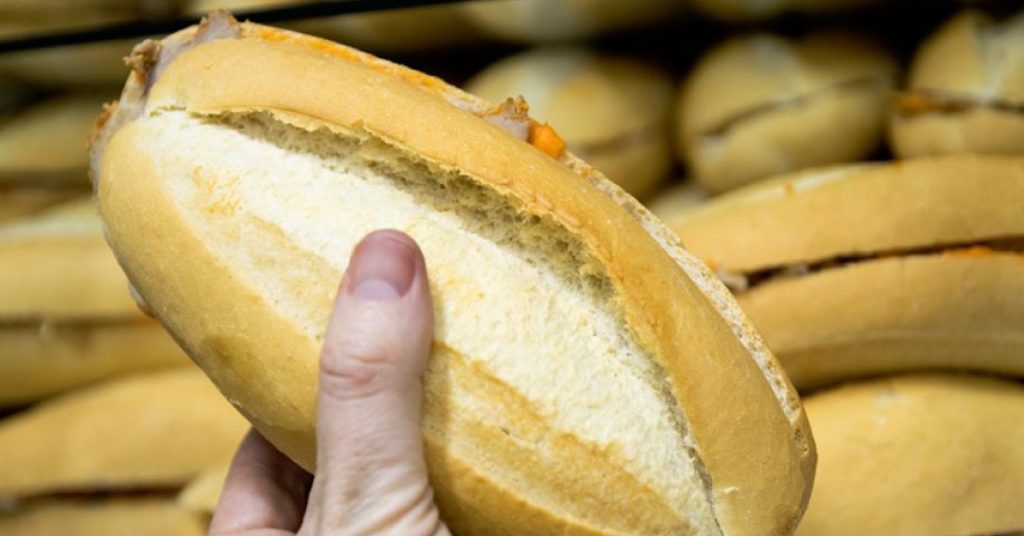
Leaving Santa Lucía turn right (again the road N 340/A-48 towards Vejer), at the roundabout take the exit towards “Algeciras, Málaga”, N-340) once more, but this time continue for about three kilometres. Having just passed the petrol station (visible on your left hand side) you take the exit to “Barbate” on your right (CA 2142). You pass through the rural settlement of. La Barca de Vejer, an area which was of great strategic interest in history, given that the river that runs through it. The Barbate River, was navigable up to this embarkation point from ancient times until the 19th century. Here you will find one of the few remaining examples of the province’s tidal mills. It was built in the 1730s and was popularly known as “La Zúa”. La Barca is also well known for its taverns and restaurants, offering a speciality of the region known as ”lomo en manteca” (loin in lard).
Continue for about 5 km until you reach the turn-off to the SANCTUARY OF THE VIRGIN OF THE OLIVE GROVE (SANTUARIO DE LA VIRGEN DE LA OLIVA). Here you´ll find a temple dedicated to the worship of the Virgin of the Olive Grove, Patron Saint of Vejer.
This building was erected on the site of a Visigoth basilica (which, according to epigraphical sources, was constructed in 674). Here you can find a funerary monument with a pagan inscription upon it, which contains the human remains, bones and ashes of Esteban, the leading martyr of the Cádiz martyr saints Servando and German, as well as Justa and Rufina.
The carved image of the Virgin of the Olive Grove was crafted by the Sevillian sculptor Martin Alonso de Mesa in 1596. It is made from pine which was treated and decorated using the polychrome technique popular at that time. She is carrying the boy child on her left side, whilst in the other hand she holds an olive sprig, reminiscent of an age old tradition. Her tunic is gathered to one side, with simple folds which fall heavily around her, widening the figure at the base so that we can just see her feet..
On the 7th May this holy shrine becomes a place to flock to for all devoted pilgrims. This is the day when the Holy Procession, in honour of the Patron Saint of Vejer, takes place.
On the 10th of August, her devoted followers carry the effigy of their Patron Saint to the Municipal Church of the Divine Saviour (la Iglesia del Divino Salvador) in Vejer, where she remains until the 24th of August, when she’ll be returned to her temple once again. During this fortnight Vejer celebrates to commemorate and honour their patron saint; the Virgin of the Olive Grove.
For further information of the Sanctuary visiting times : tel: 956 450 056
Continue along the road CA 2142 towards Barbate, drive the town and you’ll come across the Natural Park of La Breña and Marismas del Barbate (Parque Natural de La Breña y Marismas del Barbate ) which is shared between the municipalities of Barbate and Vejer. Vejer has 82 hectares of marshland, which form part of the terrestrial section of the maritime park of “La Breña”. Being riverbed marshes, they are rich in vegetation (lilies, willows, …) as well as providing a habitat for a large number and variety of birds. The marshes are all that remains of what was once the ancient LAGOON OF LA JANDA (LAGUNA DE LA JANDA).La Breña is located in the westernmost part of the Subbética Mountain Range, where the forest meets the sea, forming one of the most beautiful landscapes on the Cádiz coastline.
Enjoy your drive through breathtaking landscapes (beaches, pinewoods and the headland of Trafalgar) as you make your way towards EL PALMAR BEACH , PLAYA DE “EL PALMAR” (road A-2230)
If you were under the impression that Vejer didn´t have a beach, today you’ll discover how mistaken you were.
In fact, Vejer has its own magnificent beach on offer, just 9 km away from the town centre: “El Palmar Beach” is situated on the Costa de La Luz, or “Coast of Light” and is a vast, extensive stretch of coastline on the Atlantic shore, between Capes Trafalgar and Roche. Blessed with its fine sand, crystal clear waters and natural setting, this is one of the few unspoilt beaches in the region.
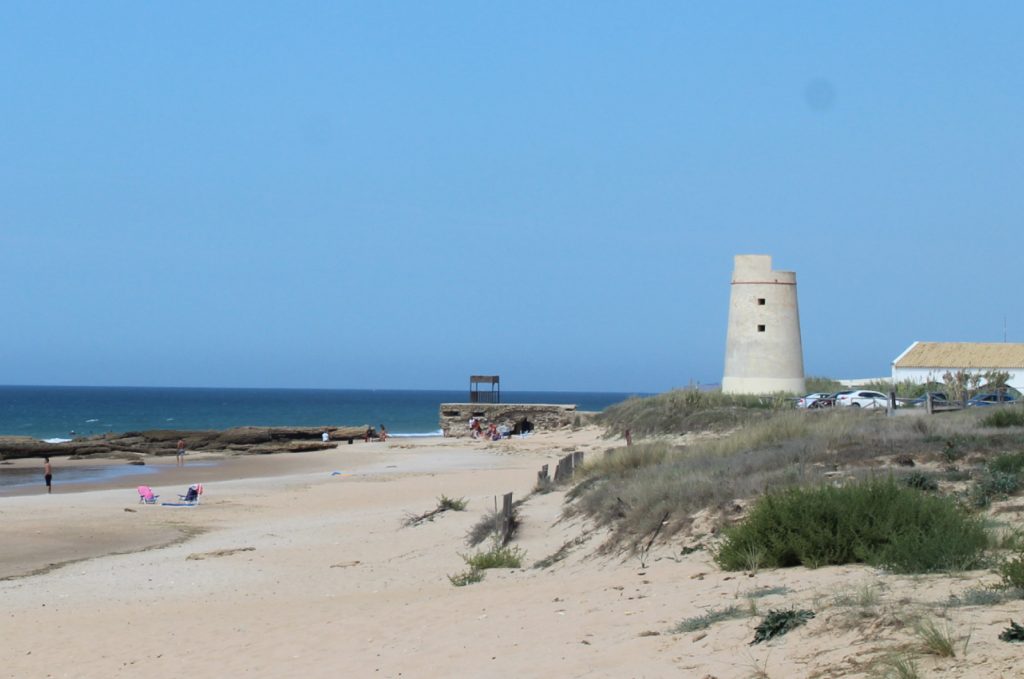
“TORRENUEVA” is the iconic symbol of our beach.
It is a 17th-18th century defence tower, designed to guard the coast. Like other towers built along the Cadiz coastline, this watchtower was used to s part of an alert operation against invasions from pirates and bandits. Communication with the other towers was carried out by means of smoke signals during the day and fire signals at night.
El Palmar beach has recently been awarded a “Q” for Quality for the fourth consecutive year, which is comendable, taking into account its rural setting and characteristics. This award was granted by the ICTE (Institute of Spanish Tourist Quality and the Ministry of Industry, Tourism and Commerce) as recognition of the fact that, within the rural beach category, there is an excellent array of services on offer as well as an impressive policy towards the environment, sustainability and accessibility, amongst other facilities.
Furthermore, we have also improved the quality of our services with the launch of the new Beach Integrated Service Centre (Centro Integral de Servicios de Playa) next to the Neighbourhood Centre, which consists of the Tourist Information Point (Información Turística), showers and toilets, changing rooms and also showers adapted for disabled use.
As the beach is ideal for practising watersports, distinct zones have been set up: one for surfing, another for fishing, a sports area with a beach volleyball net and a children’s zone for games and workshops.

End of the day. We hope you enjoyed your stay in Vejer, see you soon!

Vejer Tourist Office
- Avda. de Los Remedios, 2 11150 Vejer de la Frontera, Cádiz.
- 956 451 736
- oficinaturismovejer@hotmail.com
